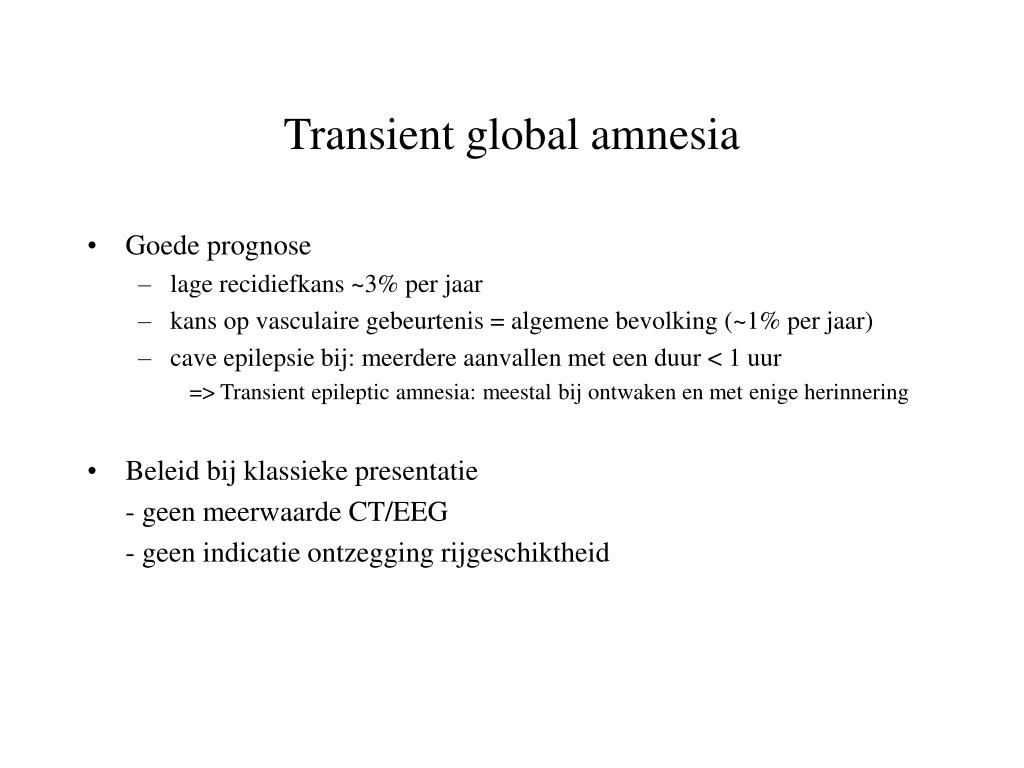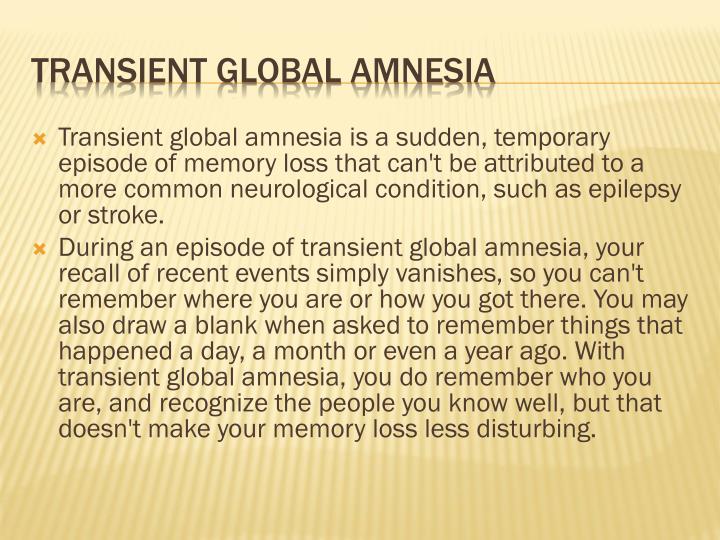

As a broad initial filter for cases where the diagnosis was considered, “transient epileptic amnesia” was queried against the Impression/Report/Plan section of clinical notes.įor the resulting 209 cases, detailed review of the medical record isolated 20 individuals meeting previously proposed diagnostic criteria for TEA ( 9): Potential cases were identified using the Advanced Cohort Explorer (ACE), a search tool for the Mayo Clinic Enterprise Data Trust. We performed a retrospective analysis of patients diagnosed with TEA at the Mayo Clinic in Rochester, Minnesota over an ~20-year period between Januand September 21, 2017. Our objective was to characterize the clinical, EEG, and neuroimaging profiles of TEA through a detailed review of cases seen at the Mayo Clinic Minnesota. Given the therapeutic potential and the strikingly different prognostic implications of this disorder in contrast to those associated with neurodegenerative causes of memory impairment, recognizing TEA is crucial. Other less specific cognitive and behavioral complaints can also be present and may precede the identification of amnestic spells by years ( 6).Īlthough increasingly recognized as a unique clinical syndrome, TEA can easily be misdiagnosed as TGA ( 7), migraine variant, or psychogenic amnesia, and may precipitate an evaluation for a neurodegenerative disease due to its typical onset in late adulthood, associated interictal memory complaints, and the possibility for amnestic spells to go unwitnessed or unrecognized ( 8). Distinctive forms of memory dysfunction associated with TEA include loss over days to weeks of recently learned information (known as accelerated long-term forgetting) and loss of memories of remote life events (known as autobiographical memory impairment) ( 4, 5). In addition to the transient amnestic spells which are the hallmark of this disorder, most patients with TEA experience some degree of chronic memory difficulties. Although reminiscent of events of transient global amnesia (TGA), the spells of TEA tend to be shorter (often 1 h or less), more commonly recurrent, associated with waking, and responsive to anti-seizure medications (ASMs) ( 2, 3). Memory for the events themselves can be partially to completely absent, heightening the importance of having witnesses to recount symptoms. During episodes, patients may exhibit repetitive questioning and appear confused, disoriented, or anxious, but typically have otherwise preserved neurologic function. Transient epileptic amnesia (TEA) is a clinical presentation of focal epilepsy of presumed temporal origin which is characterized by self-resolving episodes of retrograde and/or anterograde amnesia ( 1). FDG-PET may also complement MRI in distinguishing TEA from neurodegenerative disease when suspected. In the appropriate clinical context, our findings support the use of early prolonged EEG with emphasis on sleep monitoring as a key diagnostic tool. This syndrome is frequently associated with persistent interictal cognitive/behavioral symptoms and thus can be mistaken for common mimics. Anti-seizure therapy, most often with a single agent, resulted in improvement (reduction in spell frequency and/or subjective improvement in interictal cognitive/behavioral complaints) in all 17 cases with available follow-up.Ĭonclusions: TEA is a treatable cause of amnestic spells in older adults. FDG-PET identified focal hypometabolism in 2/8 cases where it was performed, both involving the frontal and/or temporal regions.

Brain MRI revealed focal abnormalities in only 4/19 cases (21%).

In numerous cases, sleep and prolonged EEG evaluations identified abnormalities not previously seen on shorter or awake-state studies. EEG revealed epileptiform abnormalities involving the frontal and/or temporal regions in 12/19 individuals (63%), including activation during sleep in all of these cases. Thirteen patients (68%) reported persistent cognitive/behavioral symptoms, including 4 (21%) for whom these were the chief presenting complaints. Results: Nineteen patients were identified (14 men, 5 women) with median onset age 66 years and median time to diagnosis 2 years.

Diagnostic criteria included the presence of recurrent episodes of transient amnesia with preservation of other cognitive functions and evidence for epilepsy. Methods: We performed a retrospective analysis of patients diagnosed with TEA at the Mayo Clinic Minnesota from Januto September 21, 2017. Objective: To characterize the clinical, EEG, and neuroimaging profiles of transient epileptic amnesia (TEA). Department of Neurology, Mayo Clinic-Rochester, Rochester, MN, United States.


 0 kommentar(er)
0 kommentar(er)
